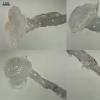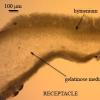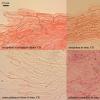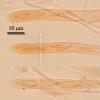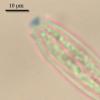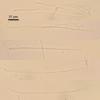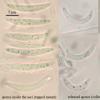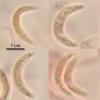
07-01-2026 10:24
 Danny Newman
Danny Newman
Pezicula sp. on indet. hardwood Appalachian Highl

07-01-2026 22:22
 Danny Newman
Danny Newman
Tatraea sp. on indet. hardwood The Swag, Great Sm

07-01-2026 17:29
 Marc Detollenaere
Marc Detollenaere
Dear Forum,On a barkless Populus I found some smal

10-11-2021 17:33
 Riet van Oosten
Riet van Oosten
Add-on topic http://www.ascofrance.com/forum/7059

07-01-2026 10:05
 Danny Newman
Danny Newman
cf. Chaetospermum on XylariaCosby Campground, Grea

02-01-2026 17:43
MARICEL PATINOHi there, although I couldn't see the fruitbody, I

04-01-2026 17:45
 Stephen Martin Mifsud
Stephen Martin Mifsud
I was happy to find these orange asmocyetes which
Growing on leaf sheaths of Carex rostrata in bog, 18.09.2012, N61,058846° E69,467926°.
Apothecia turbunate, with long stipe (16 mm), graduating to receptacle (4 mm diam), outer surface of stem covered by slime, disc and outer surface have the same whitish color, translucent.
Stem composed of outer gelatinose layer, excipulum (porrecta) and medulla (gelatinosa), receptacle lacking outer gelatinose layer and have excipulum from textura globosa-prismatica, medulla the same; cells of prismatica at stem 46 x 8,7; at receptacle 40 x 15; hyphae in medulla 2,5 broad; outer gelatinose layer hyphae 2 mk broad, ended with enlarged clavate cells up to 8 mk broad; asci cylindrical, with not clear clamp, pore euamyloid, 64,5-74,7 x 5-6,5; paraphyses cylindrical with some enlargement to the tip (2 mk broad at tip), without VBs, segmented, rarely branched; spores fusoid when in asci, upon release becoming strongly curved, many guttulate, 19,5 (18-21) x 2,5 (2,2-2,7) (10 straight spores measured).

Zotto
I've noticed that spores collected from stipe (washed away here) all were strongly curved, in contrast with tapped mount where spores were forced to release, and there they were curved and straight both. There is one more picture of such spores from stipe, only strongly curved. So, probably they become curved some time after release? I may study this repetedly, i have two more frbs.

Now I see: HB 6200 (Karsten 2061, in H) shows the type of pileata with long straight spores which corresponds to his diagnosis. HB 4498 (same coll. from M) does not fit the protologue, so is not type, though labelled "holotype". The closely related species with C-shaped spores is Helotium costantini Boud.
Zotto



